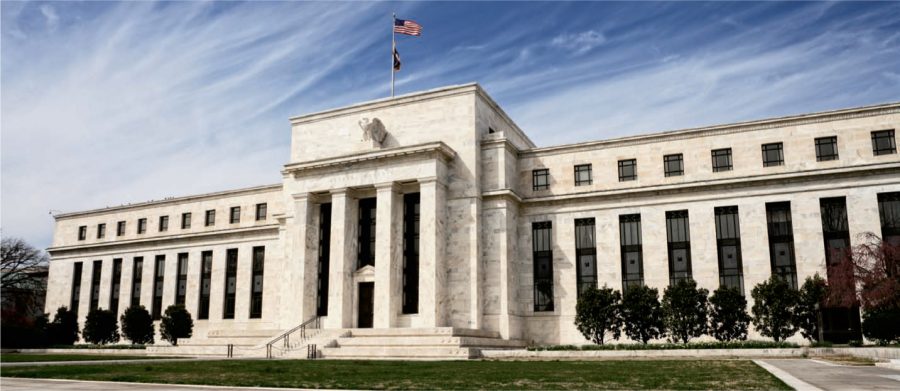The Federal Reserve’s Contrasting Responses to Economic Downturn: 2008 and 2020
January 26, 2021
The Federal Reserve is America’s most important financial institution in terms of its ability to spur economic activity and mitigate downturn. Its dual mandate – stabilizing prices and attaining maximum employment – has become significantly more important in the context of the COVID-19 pandemic, which effectively erased five years of GDP growth, according to the New York Times. The Fed took several drastic actions rapidly in mid-March, 2020. Most importantly, it dropped the target federal funds rate range, the interest rate at which commercial banks borrow and lend their excess reserves to each other overnight to meet reserve requirements, from 1.00-1.25 percent to 0-0.25 percent. By lowering the federal funds rate, the Federal Open Market Committee (FOMC) can spur economic activity in response to deflationary pressure. On March 15, 2020, the FOMC announced that the Federal Reserve would purchase treasury bonds, increasing liquidity and thus lowering the federal funds rate. The Fed’s immediate and substantial response restored confidence among U.S. investors and prevented a financial crisis similar to 2008.
In 2008, the Fed hedged its bets, worrying simultaneously about the impending deflation while trying to prevent excessive inflation. Though it cut interest rates from 5.25 percent to 2 percent from September 2007 to April 2008, when the time came to rescue the U.S. economy from the brink of disaster, the Fed hesitated. Most members of the FOMC argued that the potential inflation necessitated raising rates promptly, while only a few argued that the fears were unfounded and the Fed ought to prioritize spurring growth. One of those detractors was Janet Yellen, then San Francisco Fed chief who went on to serve as Chairman of the Federal Reserve and was confirmed by the Senate on Monday as the nation’s first female Treasury Secretary. Markets welcomed her measured and pragmatic stewardship of the economy after President Biden’s transition team announced her nomination on November 30, 2020.
At FOMC meetings in June and August of 2008, the committee neglected to lower rates due to the phantom inflationary pressures perceived by hawkish members. The economy remained largely stagnant, as then St. Louis Fed president James Bullard articulated the position of most of the FOMC that “the level of systemic risk” had “dropped dramatically, and possibly to zero.” This remained the stance of the FOMC even in the wake of Lehman’s failure in September 2008; on the 16th, they opted not to drop rates further, once again citing inflationary pressure. The Fed prioritized a phantom crisis over the actual one and neglected to take actions that could have mitigated the ensuing economic downturn.
Fortunately, the FOMC learned from its mistakes and took care not to repeat them in 2020. Fed Chair Jerome Powell deserves recognition for bearing in mind systemic risk and immediately enacting emergency responses. That said, former chairs Ben Bernanke (who presided over the 2008 crisis) and his successor, Yellen, noted other policy tools the Fed could deploy to bolster its response. The Fed ought to restart its Term Auction Facility (TAF), which would enable lending to a greater diversity of borrowers relative to the discount window, without the negative stigma associated with accepting discount window loans. Such borrowing would no longer be perceived as faltering banks’ last-ditch effort to stay afloat, allowing recipients to be financially responsible without opening themselves to accusations of financial instability. Nonetheless, the Fed’s response to the economic downturn due to the COVID-19 pandemic is laudable. By staying its course, the Fed will ensure the economy’s steady recovery.








